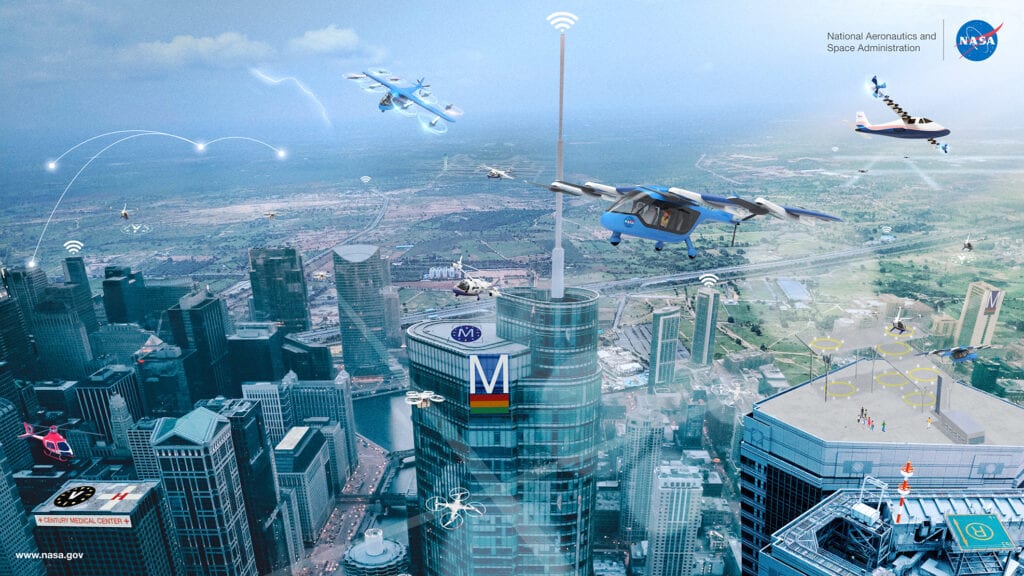
NASA’s AAM NC project is a collaboration between the agency, industry, and the Federal Aviation Administration (FAA). It is funded through 2030 and every two years the campaign gets more complex in operations. (NASA)
NASA has added 13 new companies and one university as partners on its Advanced Air Mobility (AAM) project that is researching the integration of air taxis and drones into the national airspace, according to a July 8 release from the agency.
These companies will participate in NASA’s National Campaign (NC-1) in 2022 which will include flight demonstrations and simulations around the country over a period of several months.
“The National Campaign team is excited to conduct operational flight demonstrations with the first Advanced Air Mobility integrated experimental ecosystem for the urban environment that connects airspace providers, infrastructure services, and a UAM vehicle in real-time,” Starr Ginn, AAM National Campaign lead, said in a statement.
NASA has added a flight partner, Reliable Robotics Corporation who is working on creating autonomous Part 23 cargo and Part 25 passenger aircraft, recently forming a partnership with Daedalean toward those efforts.
Two previous flight demonstrations partners, Wisk Aero and Joby Aviation, will also continue work with the agency, according to the release. Wisk, an electric air taxi company, has been working with NASA since November on solutions for integrating autonomous aircraft into the national airspace. Joby is set to begin flight testing with NASA later this year.
NASA will have five infrastructure partners during these demonstrations including AURA Network Systems, Raytheon Company, Robust Analytics Inc., SkyGrid, and the University of North Texas, according to the release. AURA Network Systems, which is creating a drone communications system on an aviation-approved spectrum, will also be performing communications, navigation, and surveillance activities during the demonstrations.
SkyGrid, who is creating a next-generation airspace management system for drones, will also be an airspace partner for simulations during NC-1, according to the release. NASA has also partnered with ANRA Technologies Inc., ARINC Incorporated, Avision Inc., Metron Aviation Inc., OneSky Systems Inc., and Unmanned Experts Inc for simulations.
In preparation for flight tests with Joby this year and NC-1 in 2022, NASA completed test flights with a Bell OH-58C Kiowa helicopter to simulate the hurdles AAM vehicles will face.
“We need a vehicle that has a vertical lift capability to test our flight test plan and that flight test plan is basically the blueprint of moving forward with our vehicle partners,” Ginn told Avionics International in March. “It’s to tease out what are going to be even some certification hurdles for the vehicles because the whole airspace architecture and infrastructure is built around the performance of the vehicle and so you got to come up with some minimum safety standard.”